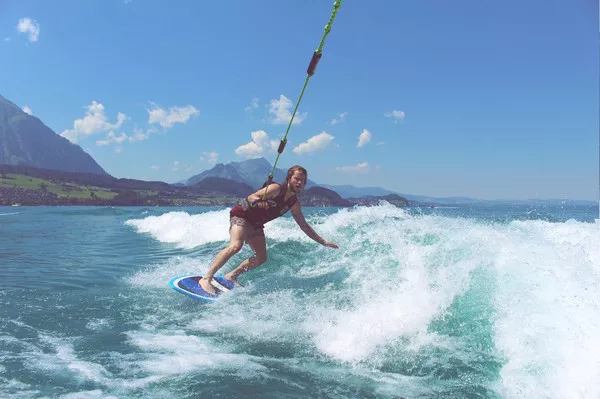Wakeboarding is an exhilarating water sport that combines elements of surfing, water skiing, and snowboarding. One of the most thrilling aspects of wakeboarding is catching big air—that feeling of soaring above the water with nothing but the wake beneath you. Achieving impressive air on a wakeboard requires skill, technique, and practice. In this article, we will delve into the strategies and methods that will help you maximize your airtime and elevate your wakeboarding experience.
Understanding the Basics
Before diving into advanced techniques, it’s crucial to grasp the fundamental principles of wakeboarding and how they influence your ability to catch air. Wakeboarding involves riding a short, narrow board over the surface of the water while being towed behind a motorboat. The wake created by the boat’s hull is the key to generating the necessary lift for aerial maneuvers.
The size and shape of the wake are influenced by several factors:
- Boat Speed: The speed of the boat affects the size and shape of the wake. Higher speeds typically create larger wakes, which can be advantageous for achieving more air.
- Weight Distribution: The distribution of weight within the boat can alter the wake’s size and shape. More weight towards the back of the boat tends to create a larger wake.
- Rope Length: The length of the tow rope can impact the rider’s position in relation to the wake, influencing the ability to launch off the wake effectively.
Techniques for Maximizing Air
Now, let’s explore specific techniques that will help you maximize airtime during your wakeboarding sessions:
1. Approach and Body Position
Approach the wake with confidence and maintain a strong body position. Keep your knees slightly bent, shoulders squared to the boat, and handle held at waist level. As you near the wake, gradually shift your weight to your back foot while maintaining tension on the rope.
2. Edge Control
Mastering edge control is essential for launching off the wake. Begin by making a wide, gradual turn away from the boat to build momentum and create tension on the rope. As you approach the wake, transition to a more aggressive edge by shifting your weight to your heelside (back edge) or toeside (front edge) depending on your preferred take-off direction.
3. Timing the Pop
The key to getting maximum air is timing the pop off the wake. As you reach the top of the wake, extend your legs explosively while simultaneously pulling on the handle. This action should be smooth and controlled, allowing you to spring off the wake and into the air.
4. Body Position in the Air
Once airborne, maintain a stable body position to control your flight. Keep your knees bent and arms relaxed, with your eyes focused on the landing spot. Avoid excessive movement or adjustments, as this can disrupt your balance and stability.
5. Spotting the Landing
As you descend from your aerial maneuver, focus on spotting the landing early. Prepare to absorb the impact by bending your knees upon re-entry into the water. Use your arms to maintain balance and stability as you regain control.
Advanced Tips and Strategies
For experienced wakeboarders looking to push their limits and achieve even greater airtime, consider the following advanced tips and strategies:
1. Progressive Edge
Mastering the progressive edge technique involves building momentum and increasing edge angle as you approach the wake. Start with a moderate edge and gradually increase the angle to generate more speed and lift off the wake.
2. Inverts and Spins
Advanced riders can experiment with inverts (flips) and spins to add complexity to their aerial maneuvers. These tricks require precise technique and body control, so it’s essential to practice in a safe environment under the guidance of experienced instructors.
3. Customizing Your Setup
Experiment with different wakeboard setups to optimize performance for catching air. Adjusting factors such as stance width, fin configuration, and board length can have a significant impact on your ability to launch off the wake.
Conclusion
Maximizing air on a wakeboard is a thrilling yet challenging pursuit that requires dedication, practice, and a solid understanding of fundamental techniques. By mastering edge control, timing, body position, and advanced maneuvers, you can elevate your wakeboarding skills and experience the exhilaration of soaring above the water. Remember to prioritize safety at all times and progress at your own pace. With patience and perseverance, you’ll be catching big air like a pro in no time. Happy shredding!

